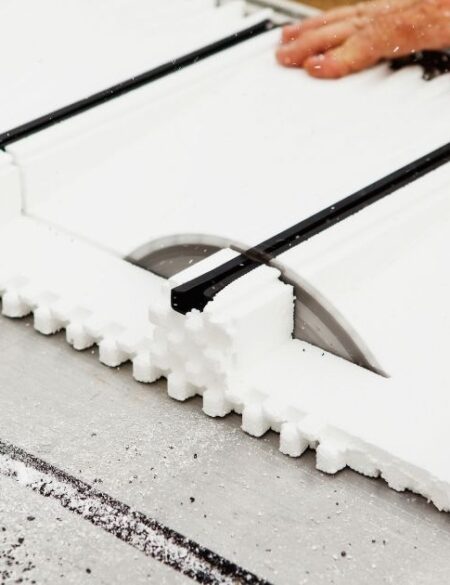Brick veneer adds a classic, timeless look to any home. But over time, these beautiful facades can start to show signs of wear and tear. You might notice your brick veneer leaning, moving away from the frame, or even falling in some spots. While this can be alarming, don’t panic. With modern technology and some elbow grease, re-anchoring brick veneer is a task many homeowners can tackle themselves without breaking the bank. This guide will walk you through the process of re-anchoring brick veneer, from identifying the problem to completing the repair.
Understanding Brick Veneer Issues
Before diving into repairs, you need to know why brick veneer can come loose.
Common Causes of Brick Veneer Problems
Several typical factors lead to brick veneer issues. For example, continuous exposure to rain and wind can erode the mortar joints, weakening the entire structure. Fluctuations in temperature and humidity contribute to the expansion and contraction of bricks and mortar.
Additionally, subpar bricks or mortar can deteriorate quickly, and existing metal wall ties may corrode, losing their integrity and leading to structural problems. An insufficient number of wall ties can cause the veneer to become unstable over time, too.
Signs of Unstable Brick Veneer
You should keep an eye out for these telltale signs that your brick veneer needs attention:
- Wall bulges: Visible protrusions on the wall are signs of underlying problems.
- Excessive wall movement: Frequent shifting or wobbling shows a lack of adequate support.
- Cracks and gaps around windows and doors: These can lead to significant energy loss and compromise structural integrity.
- Cracks in mortar joints: Visible cracks can propagate quickly if you don’t address them, leading to more severe issues.
If any of these signs are present, you will need to re-anchor the brick veneer.
Tools and Materials for Re-Anchoring Brick Veneer
Having the right tools and materials on hand can make the re-anchoring process smoother and more efficient. Here’s what you need:
- Rotary hammer drill
- SDS drill bits
- Setting tool for tie installation
- Wall tie tension tester
- Drill spotter
- Helical ties or your chosen anchoring system
- Matching masonry material for patching
- Vapor retarder
- Exterior sheathing
- Moisture barrier
- Reinforcement for mortar joints (optional)
- Specialized masonry drill bits (optional)
Re-Anchoring Brick Veneer with Helical Ties
Helical ties are a popular and effective solution for re-anchoring brick veneer. These stainless steel fasteners offer a strong, nearly invisible repair option. You can use these fasteners to anchor and reinforce masonry. Their unique spiral shape allows you to insert them into drilled holes or mortar joints, creating a mechanical link between the brick wall and its supporting structure. This method provides a seamless and effective way to realign the bricks with their original placement.
Benefits of Helical Ties
Helical ties have several benefits—primarily, you can easily install them with heavy-duty tools. Even without previous experience, most homeowners will find these ties straightforward to use.
Once you install them, these ties are barely noticeable. Plus, they provide both tensile and compressive strength, which promotes resilience against external forces. And, they’re available in various diameters and lengths for different applications.
Installing Helical Ties
Here’s a detailed guide to installing helical ties:
- Drill a pilot hole: Drill through the facade and into the backup material, adding an extra inch to the specified embedment depth.
- Use rotation-only mode: This is especially important when drilling into soft masonry or hollow backing materials to prevent undue stress.
- Insert the tie: Place one end of the tie fastener into the installation tool and start the insertion.
- Drive the tie home: Use an SDS rotary hammer in hammer mode to drive the tie into the pilot hole to get a firm fix.
- Finish by countersinking: Continue driving until the nose of the setting tool is set against the veneer, countersinking the tie below the surface. Countersinking is when you bevel and make the rim of a hole larger so the tie is flush with the surface.
- Repeat the process: Place one anchor per two square feet of patched veneer to provide even support.
- Patch the drilled holes: Use matching masonry material to hide any visible work.
Alternative Methods for Re-Anchoring Brick Veneer
While helical ties are a popular choice, these other methods can also work to re-anchor brick veneer.
Adhesive Anchors
Adhesive anchors are an innovative solution that combines a screening tube, sealant, and a steel rod. To use adhesive anchors, cover the screening tube with sealant to provide a strong bond. Then, place the tube in a drilled hole and position it for optimal support.
Next, insert the steel rod and push it into the screening tube for a tight fit. To finish, press the rod in firmly to distribute the adhesive evenly and anchor the rod securely.
Facade Tie Brackets
These brackets provide reliable connections without altering the exterior masonry. Facade tie brackets are useful in strengthening veneers during renovations. They are the best fit for new construction projects. They simplify modifications due to their efficient design and straightforward installation.
Asymmetric Helical Steel Ties
With a smaller diameter at one end, these ties offer more flexibility in handling tougher backup materials. They are designed to thread into various substrates, providing strong anchoring while accommodating varying material hardness.
When To Call a Professional
Although many homeowners might handle the re-anchoring process themselves, you should hire a pro if there’s extensive veneer damage, foundation concerns, or you don’t have the masonry experience or necessary tools. Additionally, some local building codes may require you to hire a professional for certain projects.








